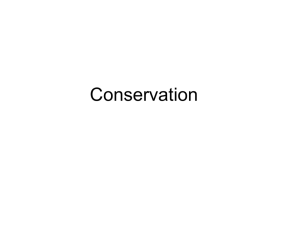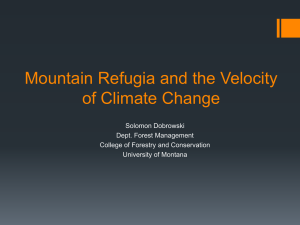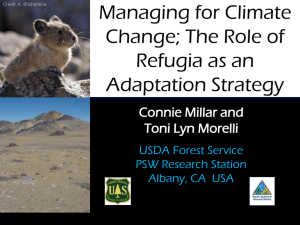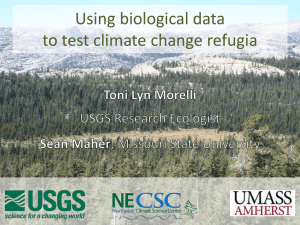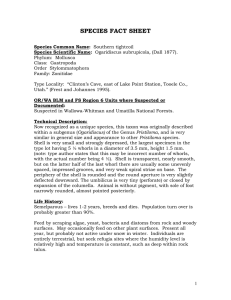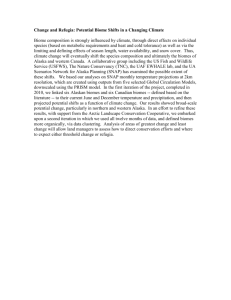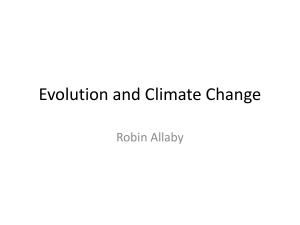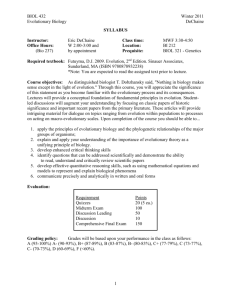Crost on Livingston Refugia
advertisement
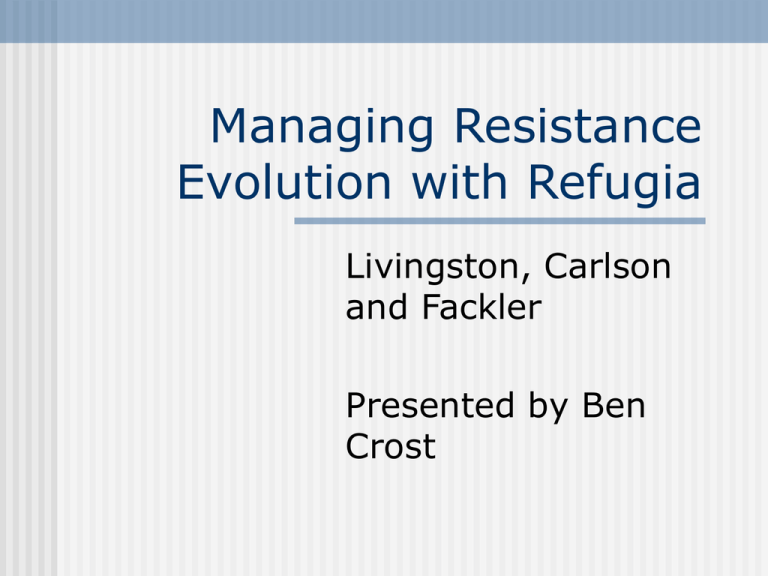
Managing Resistance Evolution with Refugia Livingston, Carlson and Fackler Presented by Ben Crost The Setting Cotton production in the midsouth Two pests: budworm and bollworm Two pest-control technologies: Btcotton and pyrethroids Evolution of resistance to pestcontrol is a major problem The Setting (2) Resistance-free pests are a public good The EPA tries to control resistance by mandating refugia Farmers have two options: 1.) leave 5% of their cotton-crop non-Bt and unsprayed 2.) leave 20% non-Bt but sprayed The Question What is the optimal size of refugia? Combine biological, economic and regulatory model Biological Model 2-locus by 2-allele model Locus: The specific place on a chromosome where a gene is located Allele: A variant of the DNA sequence at a given locus Biological Model (2) 2 Loci: Bt-resistance, Pyrethroid resistance 2 Alleles: resistant, non-resistant This setup gives rise to 9 different genotypes (since each individual has 2 sets of chromosomes) Biological Model (3) 5 non-overlapping generations Genes get transmitted between generations by random mating (Calculate frequencies of all 4 possible gametes and then frequencies of all 9 possible combinations) Biological Model (4) Genotypes can be confronted with 4 possible environments (Bt/non-Bt by sprayed/unsprayed) Each genotype has a survivalprobability in each environment Given the environments, we know what will happen to the pestpopulation Economic Model Representative producer maximizes profits, s.t. pest-population and regulatory constraints Size of pest-population maps into Bt-use, Pyrethroid-use and profits Bt-use and Pyrethroid-use feed back into biological model Regulatory Model Regulators want to choose refuge constraints that maximize the representative producers discounted profits 2 Scenarios: Static and dynamic Estimation Lots of parameters from a variety of sources (lab-studies, econometric estimation from observed data, educated guesses from observed data) Grid search over possible refugia sizes Results Current refugia mandates are too large (optimal would be 2% unsprayed or 16% sprayed) Results are very sensitive to heterozygous Bt-resistance parameter (up to 74% sprayed refugia with still realistic parameters) Remarks It seems that the authors were aiming for a low value of refugia: They chose a short time-horizon and no bequest value Their values for heterozygous resistance are lower than lab-studies suggest Improvements? Get better estimates of model parameters Calibrate model to observed data Bayesian Model Averaging
